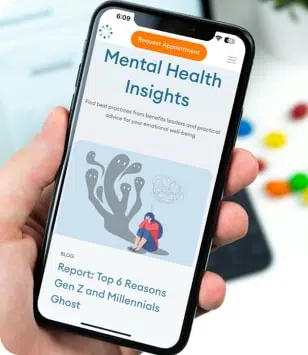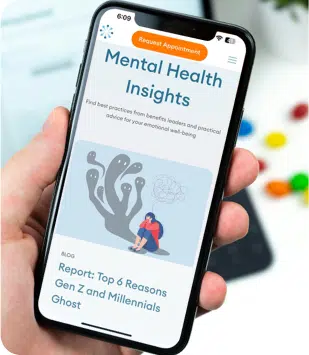Overcoming Social Isolation: Strategies for Connection and Community

Humans are social beings. Throughout history, social connection and cooperation have been a part of survival. Although technology allows people to connect more than ever, loneliness is a problem many people face daily.
In this article, we look at the impact of social isolation on mental health and strategies you can start using to foster meaningful connections.
The Impact Of Social Isolation On Mental Health And Well-being
Social isolation refers to an individual who lacks social contact and engagement. It can involve a lack of emotional connection, not just physical separation. You can feel connected to others without being in the same room. Social isolation could be temporary, like struggling to build relationships after moving to a city and not knowing anyone. It can also be chronic, where it could lead to a more long-term effect on your life.
If you’re feeling alone, it’s not just you. A recent survey found that almost a quarter of people all over the world feel fairly or very lonely daily. That’s more than a billion people, with older adults reporting the lowest levels of loneliness and young adults (19-29) with the highest rates of loneliness. Busy lifestyles, high expectations, social comparisons, mental health challenges, and a lack of community support can all contribute to feelings of loneliness. Social well-being is an important part of the human experience and plays a significant role in mental health.
Social isolation can affect your social skills, lower confidence, and make the idea of going to a social event feel like an anxiety-provoking situation. But there’s more. The effects of social isolation can seep into several aspects of your life:
- Mental health issues (a lack of social support can worsen certain conditions)
- Sleep problems
- Higher stress levels
- Weakened immune system
- Cognitive decline
- Lower life satisfaction
One Harvard study that spans decades set out with a mission to answer one question: what makes us happy? So, what’s the answer?
Well, the longest study on happiness found some key insights. The first is knowing when to let go and not sweating the small stuff, or so the saying goes. The second is to stay connected. The study started in 1938 and followed participants for nearly 80 years. Researchers found a strong connection between happiness and close relationships, while isolation pulls mood down.
4 Strategies For Building And Maintaining Relationships
Overcoming social isolation and stepping out of your comfort zone is not easy. Social skills, fear of rejection, mental health issues, and limited opportunities can all make breaking free from social isolation that much harder. But there are steps you can take to build and maintain relationships that you can apply to your life that do make a real difference.
- Tap Into The Power Of Connection
This section focuses on either nurturing existing relationships or making new connections. Start by scheduling time in your day to stay in contact with a friend or family member. It could be a text or a phone call where you suggest an activity you could do together. Think about the people you already know in your network and if you could bond more with them. It could be family, friends, neighbors, or work colleagues. You don’t need to make some bold, scary gesture; a message can be enough to make initial contact.
If you can’t think of anyone in your existing circle, it’s time to consider meeting new people. Here are some social isolation solutions to try and make new connections:
- Online communities – explore virtual communities and forums. Try looking for online support groups or find people interested in one of your hobbies.
- Join a club – sports and hobby groups provide a more natural way to meet people with like-minded individuals. Websites like Meetup.com are helpful for finding local events and groups near you.
- Volunteer – try volunteering for a cause you believe in to meet others passionate about similar things.
- Finding Community: Engaging in Shared Interests and Hobbies
When you talk to someone with similar interests or hobbies, you already have something to talk about. You can skip the small talk and just discuss the hobby. Over time, you might even get to know each other a little more and find a community that you enjoy.
If you don’t have any hobbies or anything that comes to mind, that’s also completely normal. There are plenty of hobbies you can try until you find something that you genuinely enjoy, like:
- Dancing
- Rock climbing
- Group hiking
- Birdwatching
- Fitness classes
- Chess
- Yoga
- Board games
- Cycling
- Running
- Dog walk meetups
The likelihood is that most hobbies or interests will have a group dedicated to them. Another option is to take a class or workshop to learn a new skill. This gives you the opportunity to learn and connect with like-minded individuals at the same time. You can take classes and workshops in a ton of different areas like:
- Languages
- Musical instruments
- Writing
- Foraging
- Pottery
- Cooking
- Leveraging Digital Tools for Connection and Engagement
Finding ways to stay connected and engage with people regularly is essential. Sometimes, going from nothing to being very social can feel overwhelming. Instead, think about what connection looks like for you. Some people love being alone and spending time by themselves to recharge. Being alone and feeling lonely are very different.
We live in a time when technology allows us to speak to someone on the other side of the world. Although it feels like it’s just you, the chances are that so many other people feel the same way. But it does take consistent effort to create and maintain connections. Technology can help some individuals find connections, especially those with busy lifestyles. Try the following:
- Balanced social media use – social media platforms can help you connect with friends and family as well as engage in online communities.
- Online support groups – if you’re going through something, explore online support groups for a specific challenge or interest.
- Pick up the phone – video chat, calls, texts, and messages are all a button away. Taking the first step can sometimes feel daunting, but it can empower you to feel more connected.
- Building a Strong Sense of Self and Inner Fulfillment
The first three strategies to overcome social isolation focus on practical steps to improve social connections. Loneliness is not a personal failure; seeking professional help can offer a new perspective.
Social isolation and loneliness are complex issues that can stem from a number of places. Loneliness can affect anyone. Building a solid sense of self can help you to improve social connections for a few reasons:
- Increase confidence
- Set healthy boundaries
- Build resilience
- Learn effective communication
- Increase empathy and understanding
Balancing self-awareness and improvement with an openness to others is crucial. Here are some ways you can start to focus on yourself:
- Mindfulness and meditation – develop self-awareness, manage stress, and learn to be more present.
- Self-care – create a routine that prioritizes all aspects of your health: physical, mental, and emotional.
- Therapy – speaking to a therapist can help you learn effective ways to communicate, build self-esteem, address mental health issues, and work through hard times to understand how you feel.
- Personal interests – do something you like that brings you joy and fulfillment, alone or with other people.
Taking Steps Towards Connection and Community for a Happier, Healthier Life
When you feel like you belong, have a sense of community, and have someone you can call in a time of need, it supports multiple areas of your life. People with meaningful connections have less stress, better sleep, healthier habits, and a better quality of life. Loneliness and social isolation increase the risk of depression and heart disease.
If you’re struggling with loneliness or think you would benefit from speaking with a therapist, book an appointment today. We have locations in most major cities, including NYC, San Francisco, and Illinois.

The Link Between Social Media and Depression
In today’s world, scrolling through social media is as routine as brushing our teeth. We open apps out of habit — on the train, in bed, while waiting in line. Platforms like Instagram, TikTok, and Facebook keep us connected, informed, and entertained.

Signs Depression is Taking a Toll on Your Relationship
Depression can impact every part of a person’s life, from their work to their romantic relationships. Dealing with depression can take its toll on both the person with depression and the supporting partner. If you’re worried that depression is affecting your relationship, understanding its impact is an important first step.

Anxiety Attack and Panic Attack Differences
’s easy to mix up anxiety and panic attacks. While anxiety attacks and panic attacks do have overlapping symptoms, they are different. Let’s get into the differences between anxiety and panic attacks so you can be in a better position to get the help you need.

How to Overcome Procrastination and Anxiety
Procrastination is a very typical human experience. At some point or another, we’re all guilty of putting off that task we know is important. Maybe it’s household chores, filling your taxes, paying bills, or some other mind-numbingly boring task.




